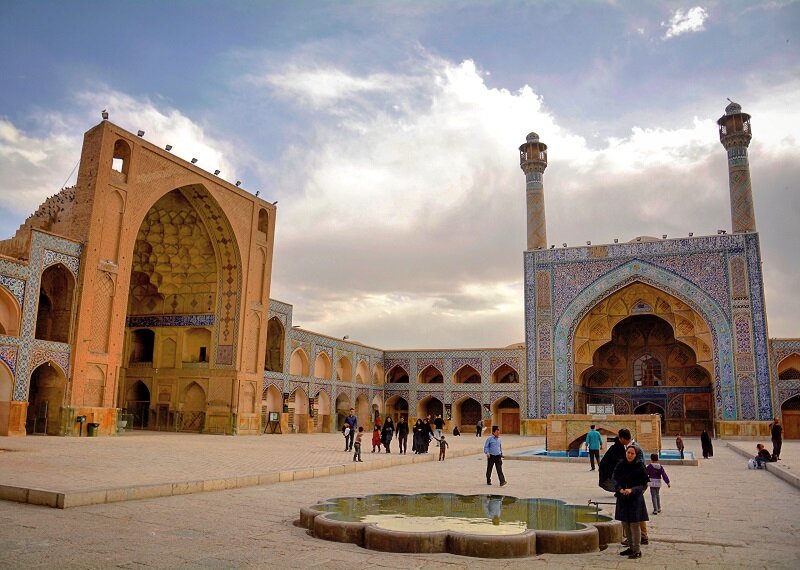UNESCO-listed Isfahan mosque undergoes cleaning project after half a century

TEHRAN - A restoration and cleaning project on the tiles of the UNESCO-registered Jameh Mosque of Isfahan, also known as Atiq Mosque, has commenced for the first time in 50 years.
Senior experts from Isfahan’s cultural heritage directorate have employed the latest scientific methods to begin the tile cleaning operations, starting with the western prayer hall of the mosque, the directorate’s chief said on Thursday.
“We hope to complete the restoration and cleaning of this valuable and unique mosque by the end of this [Iranian] year (which comes to an end on March 20, 2025),” Amir Karamzadeh added.
Highlighting the mosque’s significance as one of the most beautiful historical mosques in Iran and the world, the official noted: “The Jameh Mosque of Isfahan, renowned for its stunning architecture and decoration, features millions of intricate ‘haft rang’ (seven-colored) tiles and exquisite mosaic work.”
According to Karamzadeh, the last comprehensive cleaning of the tiles was carried out over five decades ago. “Since then, environmental factors, including prolonged drought, increased dust and particulate matter in the air, and heightened industrial pollution from vehicles and factories, have caused a significant accumulation of grime and soot on the mosque’s tiles.”
The Jameh Mosque of Isfahan, one of Iran’s oldest mosques, is not only a place of worship but also a masterpiece of Islamic architecture, with a history spanning over a thousand years. The current cleaning project aims to preserve the mosque’s historical and artistic integrity, ensuring that its beauty endures for future generations.
Located in the heart of Isfahan, the mosque has been a UNESCO World Heritage site since 2012, drawing visitors from around the globe to admire its artistic and architectural wonders.
UNESCO has it that the mosque can be seen as a stunning illustration of the evolution of mosque architecture over twelve centuries. The complex, covering more than 20,000 square meters, is also the first Islamic building that adapted the four-courtyard layout of Sassanid palaces to Islamic religious architecture.
Soaked in a rich history and culture, Isfahan was once a crossroads of international trade and diplomacy in Iran. Now, it is one of Iran’s top tourist destinations for good reasons. The ancient city is filled with many architectural wonders, such as unmatched Islamic buildings, bazaars, museums, Persian gardens, and tree-lined boulevards.
AM
Leave a Comment